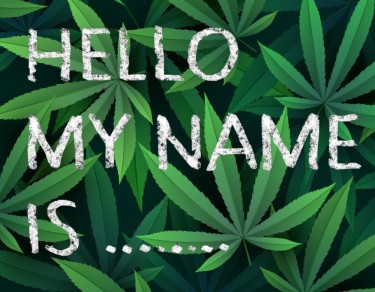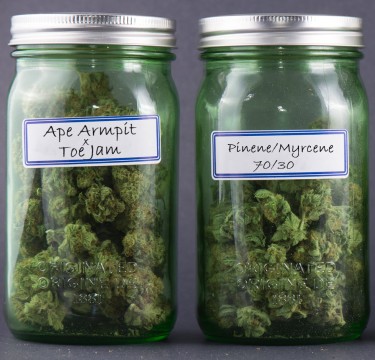
What’s in a Name? The Colorful Language of Cannabis
Unlike sterile pharmaceuticals with generic alphanumeric names, cannabis varieties bear creative, evocative titles. These unique strain names form a language that playfully celebrates the plant’s diversity.
Classic medications often get assigned clinical names like Prozac or Ambien that minimize association with effects. Some newer brands employ catchier titles, but these still disguise chemical identities behind marketing.
Cannabis bucks this boring convention. Despite being a single plant species, individual cannabis strains receive distinctive appellations denoting their specific properties and origins.
Rather than masking pharmacology in a slick brand, strain names directly convey the expected experience – Super Silver Haze instantly sparks intrigue while Sour Diesel clues you into flavor.
The vivid vernacular resonates with cannabis’s ancient folkloric status more than a sterile clinical lens. Dank Sinatra and Cobain Kush pay homage to arts while Destroyer conjures cosmic potency.
Of course, this colorful lexicon arose from underground status preventing proper documentation. But the quirky colloquialisms perfectly capture cannabis’s playful essence.
As legalization spreads, it poses questions around these funky legacy names. Should cannabis adopt medicalized terminology to be taken more seriously? Does rebranding help or harm perceptions?
Let’s explore the complex debates around cannabis nomenclature and what direction best suits this enigmatic plant…
Cannabis’s quirky naming conventions trace back to the pioneering days of North American cannabis cultivation in the 1960s and 70s. As enthusiasts like Ed Rosenthal began experimenting with selective breeding, distinctly-named varieties emerged from humble landrace beginnings.
The origins can be traced to Rosenthal’s seminal 1969 text “The Marijuana Grower’s Guide” which spread basic plant genetics and harvesting tips through the underground. Amateurs applied this knowledge, cross-breeding plants to create hybrids with amplified potency and specialized effects.
Without access to labs for proper documentation, stoner horticulturists like Sam the Skunkman, Jorge Cervantes, and Captain Humboldt gave their new crosses creative monikers conveying characteristics. Thus legendary names like Northern Lights, Alaskan Thunderfuck, and Hawaiian Snow were christened.
This ad hoc phenotype branding spawned thousands more equally colorful appellations as grassroots innovation surged through the 70s and 80s. The cryptic titles – often paying homage to region, aroma, or pop culture – became a coded language universally conveying cannabis qualities.
For instance, any patient hearing their dispensary stocked Acapulco Gold or Cheese immediately knew the effects and lineage to expect. The funky vernacular transmitted key information despite prohibition barriers.
The explosion of strain variety caffeinated the illicit seed trade and catalogues like the infamous G13. Through word-of-mouth folklore around these esoteric titles, legendary status spread. Cannabis’s ancient oral traditions persevered underground.
Of course, fantasized strain origin stories percolated in the absence of documentation and chemical verification. But the fabulist element only added to the forbidden enchantment surrounding these enigmatic plants.
Today, thousands of cannabis varieties bearing equally colorful names fill legal markets. Despite commercial testing, the legacy of improvised homegrown strain names endures. They lend character and playfulness distinctly missing from pharmaceutical branding conventions.
The idiosyncratic histories and appellations form part of cannabis’s cultural tapestry. What should become of this funky nomenclature as legalization evolves? Should we clinically rebrand, or uphold the herb’s irreverent essence?
As cannabis transitions into the mainstream, some suggest strains adopt staid pharmaceutical naming conventions to appear more medical. But this sterile approach would strip away the plant’s rich culture and nuance.
Reducing vibrant strain titles like Green Crack, Alaskan Thunderfuck, and Strawberry Cough into generic alphanumeric strings betrays the pioneers who bred this diversity. It erases beautiful botanical folklore.
Of course, proper documentation and chemistry profiles benefit patients and consumers. But we can uphold funky legacy names alongside new metrics. After all, no one insists on rebranding tomato or rose varietals for scientific validity.
One major issue is brands relabeling strains to market effects. Cannabis acted medicinally for centuries before pharmaceutical playbooks. We don’t need to conform to reductionist models that limit nature’s complexity.
Imagine if every unique wine became “Relaxation Tincture 6B.” Stripped of terroir and subtlety, all meaning gets erased into clinical sterility. Cannabis deserves dignity as an ancient folk medicine, not just a drug to standardize.
Additionally, strains represent individual expressions of the plant’s over 100 active components. They provide full-spectrum effects, not single isolated targets like Big Pharma’s Swiss army knife cures. Thus, distinctivenames add value for whole-plant medicine.
By resonating with culture and evoking connection, funky titles like Durban Poison or Obama Kush help consumers intuit holistic properties based on experience and reputation. This remains vital information that alphanumeric strings flatten.
Of course, some level of standardization and verification in the legal market benefits safety. But as with wine, preserving origins and traditional names alongside new metrics honors legacy while progressing integrity.
The path forward should leverage, not erase, accumulated generations of grassroots wisdom around these special plants. Their folk names contribute to the ritual, joy, and healing of the cannabis experience. Surely we can nurture science and culture simultaneously.
Most importantly, rebranding cannabis to seem more clinical insults its identity. Patients worldwide, from cancer sufferers to PTSD veterans, attest this humble plant provides solace and hope traditional medicine cannot. We must not disrespect its spirit.
Cannabis is so much more than a medication or commodity. Like all ancient natural healers, it transcends such reductionist frames. Its soul speaks through these delightfully eccentric names passed down. Let us call it by its true names, always.
At its sticky core, the cannabis nomenclature debate reveals deeper questions around relating to this ancient plant ally. Will we honor its cultural spirit or sanitize it into just another commercialized commodity?
While clearer classification benefits medical use, stripping away the rich tapestry of strain names erases cherished diversity. Cannabis deserves reverence as both treasured ancestor plant and empirical medicine.
Like other herbal healers, it transcends clinical reductions. The names we bequeath should reflect its sacredness alongside science.
Of course, fantasy strain origin tales percolated due to prohibition barriers to research. As legalization enables proper documentation, connecting effects to validated phytochemical profiles makes sense.
But this formalization need not eliminate whimsical legacy titles that have become cannabis culture canon. Tomato varietals retain origins alongside metrics. So should cannabis strains.
The glittering constellation of funky strain names reflects how prohibition spawned DIY ingenuity. Despite barriers, our herbalist ancestors curated these distinct chemovar lineages through selection.
Their creative titles form a coded language communicating subtle indications between devotees. To discard these colloquialisms severs precious community bonds and dickslaps the plant’s history.
Most vitally, unique strain names evoke meaning that generic strings do not. Who would resonate more with SSRI-X7 or Giant Laughing Buddha for anxiety and depression? The right appellation steers experience.
Of course, sound testing and records benefit patients and markets. But the story and spirit behind a plant is medicine too. Eradicating strain names under “clinical” pretexts erases important heritage.
Cannabis earned its folkloric tapestry through millennia of spiritual relationship and underground innovation. As legality evolves, we must honor those roots while nurturing credibility.
With integrity, the two aims need not compete. Thoughtful regulation and labeling can distinguish verified genetics and themes while preserving cherished lineage names and stories.
The truth will set this plant free. But the colorful poetry woven around it makes freedom beautifully human. Let cannabis speak its universe of names. In each resides deep meaning and connection beyond molecules alone. The sticky bottom line is love and respect for this holy flower.
THE FIGHT FOR CANNABIS STRAIN NAMES, READ ON…
THE BATTLE FOR NAMING RIGHTS OF FUTURE CANNABIS STRAINS!
- SEO Powered Content & PR Distribution. Get Amplified Today.
- PlatoData.Network Vertical Generative Ai. Empower Yourself. Access Here.
- PlatoAiStream. Web3 Intelligence. Knowledge Amplified. Access Here.
- PlatoESG. Carbon, CleanTech, Energy, Environment, Solar, Waste Management. Access Here.
- PlatoHealth. Biotech and Clinical Trials Intelligence. Access Here.
- Source: http://cannabis.net/blog/opinion/the-colorful-language-of-cannabis-strain-names-honor-the-unique-and-creative-past-of-og-growers




